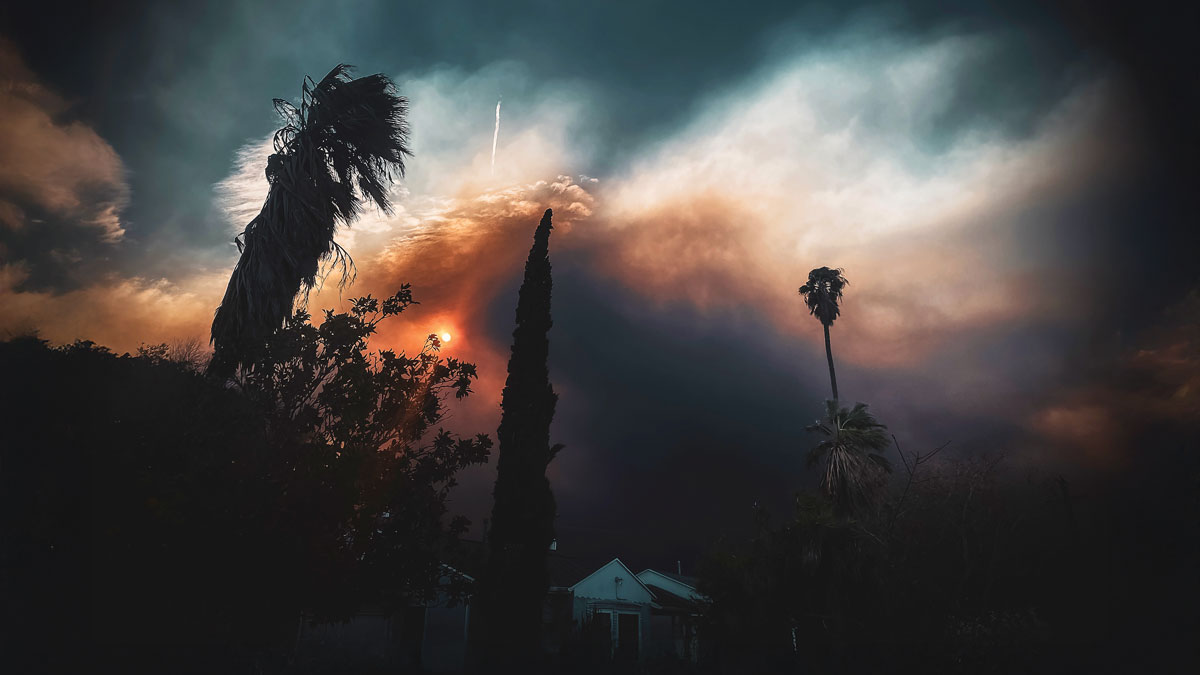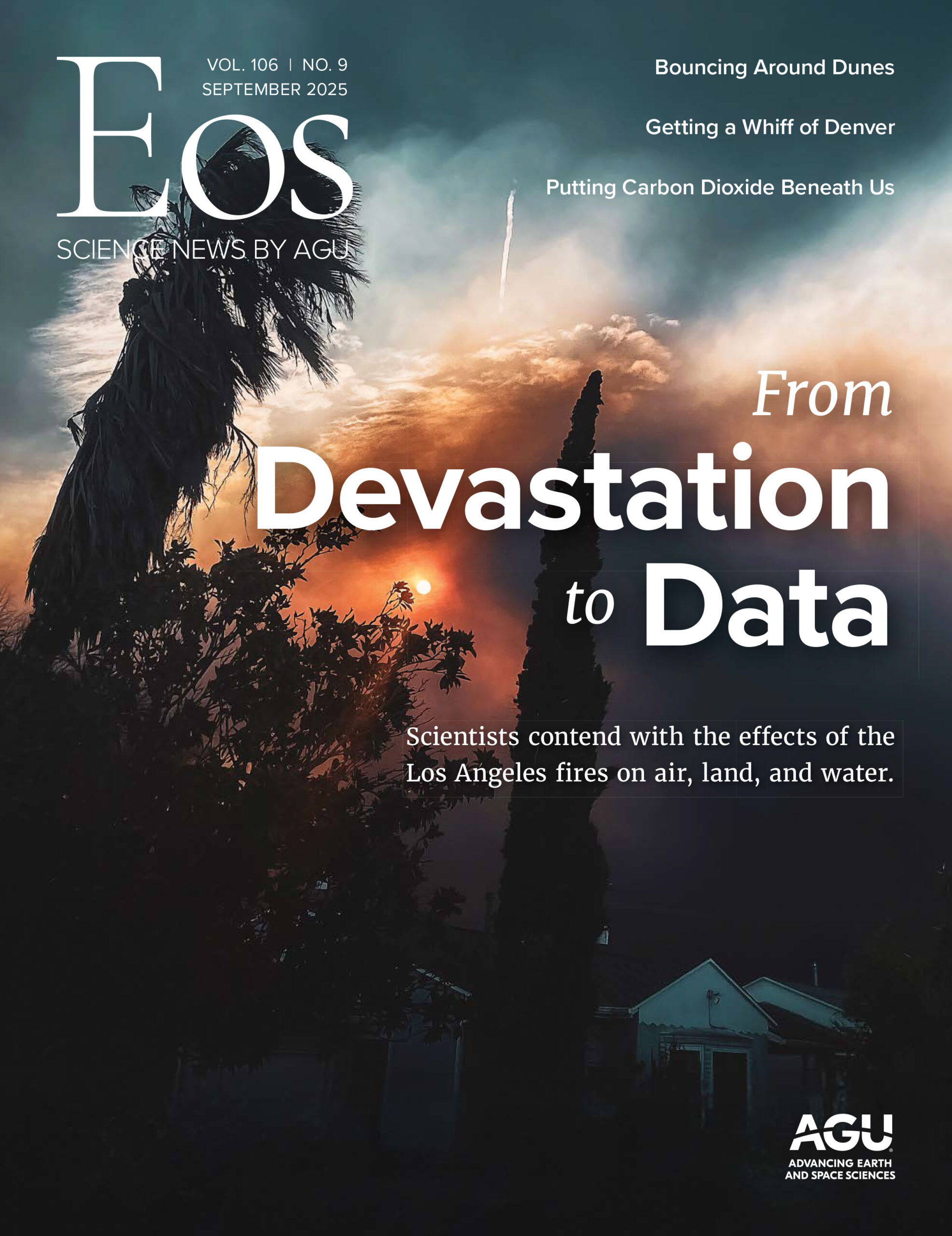Some effects of wildfire are immediately apparent: burned vegetation, smoldering ruins, dissipating smoke. As such, the massive Palisades and Eaton Fires cut charred wakes through western Los Angeles County that remain long after firefighters contained the blazes earlier this year.
This month, we shadow geoscientists investigating the fires’ less tangible, if no less serious, consequences for regional air, soil, and water quality.
“Where There’s Fire, There’s Smoke,” writes Emily Dieckman in her profile of air quality following the fires—and where there’s smoke, there are particulates, including organic compounds, toxic chemicals, and hazardous dust and ash.
For Earth scientists, the liminal space between what is urban and what is wild is crucial for understanding postfire debris flows and the ground below. As profiled by Kimberly Cartier, these researchers consider the L.A. fires to be a case study of “how this urban-rural interface is changing and what…recovery looks like.”
Watersheds, those ever-changing interfaces between earth and water, are no less fraught, writes Grace van Deelen in “Scrambling to Study Smoke on the Water.” Scientists are documenting how ash-laden runoff is changing, if only ephemerally, both freshwater and marine ecosystems.
Perhaps the most elusive and powerful consequences of the fires are their effects on human health. And in places like Los Angeles, writes Dieckman, “Access to Air-Conditioning May Affect Wildfire-Related Health Outcomes.” The L.A. fires are yet another test case for extreme events augmented by a warming climate. The importance of thoughtful, science-based policy has never been more relevant for the health of both our planet and ourselves.
—Caryl-Sue Micalizio, Editor in Chief


